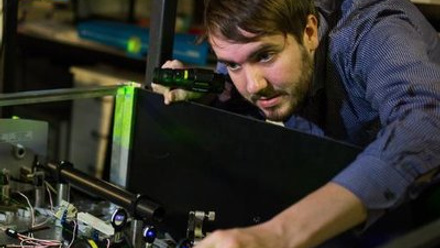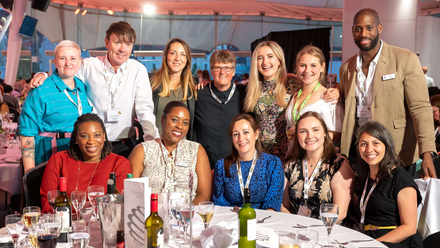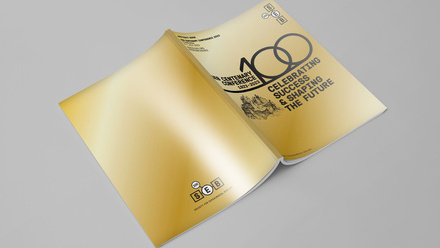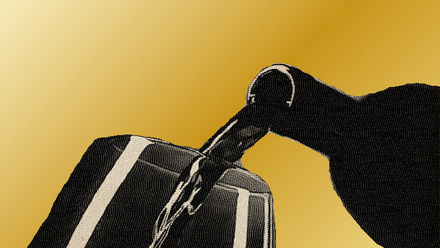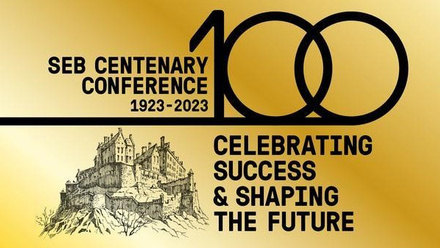Women who have shaped the SEB
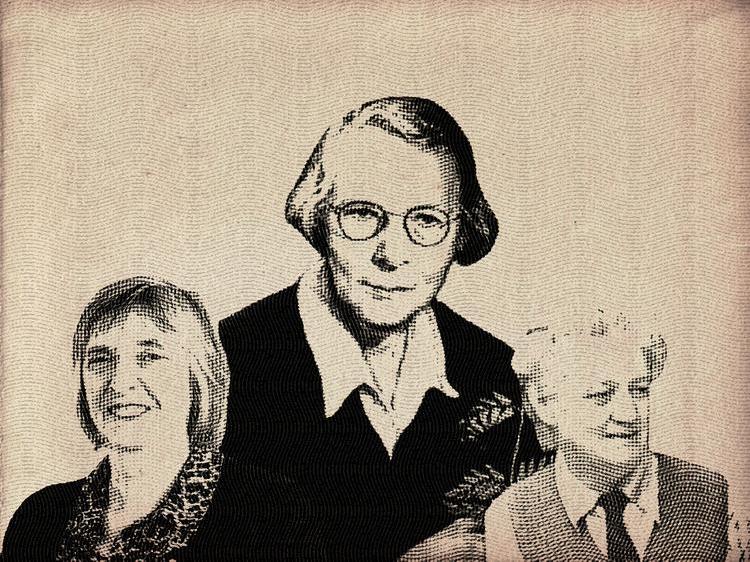
The Society for Experimental Biology (SEB) has played a significant role in shaping the field of experimental biology over the past century. While the contributions of many notable male scientists to SEB are well-documented, the pivotal role played by women in the Society's development and success are sometimes overlooked. In this article, we will explore the lives, research, and contributions of some of the pioneering women who have helped to shape the SEB, from the early days of the Society's formation to the present day.
Marie Lebour (1876-1971)
Marie Victorie Lebour, a British marine biologist born in 1876, made significant contributions to the study of marine life in the early 20th century. Her pioneering work in the field of marine biology helped to lay the groundwork for modern oceanography. Born in Northumberland, England, Lebour was the youngest of three daughters in a family with an appreciation for nature. Her father, George Lebour, was an accomplished artist and prominent geologist. Growing up, Marie cultivated an interest for the natural world while accompanying her father on his geological excursions, ultimately inspiring her own career.
After initially studying art, Lebour began working at Durham University as a demonstrator in the Department of Zoology from 1906 to 1909. During this time, she pursued her BSc and MSc in zoology and later became a lecturer at the University of Leeds while earning her doctorate. Even before receiving her formal education, Lebour had already begun her research career, publishing her first paper in 1900 on land and freshwater molluscs.
Following her doctorate, Lebour worked at the Marine Biological Association in Plymouth, England, where she remained for her entire career studying the ecology and physiology of marine animals. She focused primarily on marine invertebrates, microplankton, crustaceans, and molluscs and made several significant discoveries, identifying 28 new species of microplankton and helping to establish the importance of plankton in the marine ecosystem. Her background in art proved useful, and she created illustrations and watercolours for her research publications.
In addition to her research, Lebour was also an active member of the scientific community. She was amongst the first cohort of scientists who joined the SEB in 1923 to collaborate and exchange ideas. Her involvement in the SEB helped to further establish her reputation as a leading figure in the field of marine biology.
She passed away on March 4, 1974, in Plymouth, England, however her legacy in the field of marine biology continues to be felt today. Her contributions have helped shape our understanding of the oceans and the delicate balance of life that exists within them. She was a trailblazer in a field dominated by men and is an inspiration to aspiring marine biologists around the world.
References
-
Watts, M. (1975). Marie V. Lebour 1904-1971. Journal of the Marine Biological Association of the United Kingdom, 55(2), 403-410. Retrieved from https://plymsea.ac.uk/id/eprint/1313/1/Obituary_Marie_V.Lebour.pdf
-
Shannen. (2020, May 21). Half-hidden Histories: Marie Lebour. Retrieved from https://storieswithshannen.wordpress.com/2020/05/21/half-hidden-histories-marie-lebour/
-
Ogilvie, M. B., & Harvey, J. D. (2000). The Biographical Dictionary of Women in Science: Pioneering Lives from Ancient Times to the Mid-20th Century (pp. 745-746). Routledge. Retrieved from https://books.google.com/books?id=LTSYePZvSXYC&pg=PA745&lpg=PA745&dq=marie+lebour&source=bl&ots=-95GudMy8t&sig=ACfU3U13eSZsV7JNOkWz0V11j2TUGwFAVw&hl=en&sa=X&ved=2ahUKEwiV7L2J3O3vAhWMsJ4KHU6RCEAQ6AEwCnoECAUQAw#v=onepage&q=marie%20lebour&f=false
Irene Manton (1904 -1988)
Irene Manton was a British cytologist who was born in London. Her father, a dental surgeon, introduced her to a microscope, and her mother encouraged her and her sister to take an active interest in natural history. At school, Manton developed a passion for and despite the staff considering her idle and encouraging her parents to remove her from school to pursue music, she passed the school-leaving examination with ease winning a Clothworkers Scholarship to Cambridge to study Botany.
After reading Edmund Beecher Wilson’s 1902 book, Manton decided she wanted to pursue a career in plant chromosome cytology. In order to achieve this goal, Manton sought advice from cytologist Dr. Kathleen Blackburn and palaeobotanist Dr. Hamshaw Thomas, who recommended Professor Otto Rosenberg's laboratory in Stockholm, Sweden. There, Manton began her early work using chromosome number to elucidate interrelationships between plants and their phylogeny.
In 1929, Manton joined the Botany Department at the University of Manchester as an Assistant Lecturer. She worked under the supervision of Professor W.H. Lang, who instilled in her the importance of recording microscopic observations through photography and using fresh plant material. Lang encouraged her to switch her research focus to ferns, a subject she would continue to study for the rest of her career. She later developed the "squash method," which allowed for more accurate chromosome counting in ferns, and helped to establish that accurate chromosome counting is vital for characterising species and for phylogenetic classification.
Irene Manton was not only a brilliant scientist, but also a generous contributor to the scientific community. She was deeply involved with the SEB serving on Council during the 1950s and presenting at numerous SEB conferences. Beyond her research and service to the SEB, Manton was a gifted mentor and educator, inspiring and training young plant biologists. Her enthusiasm, meticulous attention to detail, and contagious energy left a lasting impact on generations of postgraduate students.
Apart from her scientific career, Manton had a wide range of artistic interests. She was passionate about music and played the violin to a high standard and collected Chinese and modern art. Manton continued to pursue both her leisure and scientific pursuits into her retirement before passing away on 13th May 1988.
Her legacy in the field of plant biology and as an advocate for young biologists continues to be commemorated by The Irene Manton Poster Prize awarded annually to the best poster presentation by a young scientist at the SEB's Annual Meeting in her honour.
References
-
Leadbeater (2004). The Linnean, Special Issue 5: Irene Manton - A Biography, 1904-1988. [PDF]. Retrieved from https://ca1-tls.edcdn.com/documents/Special-Issue-5-Irene-Manton-A-Biography-1904-1988.pdf
-
Royal Society Publishing. (1990). Manton, Irene (1904-1988). Biographical Memoirs of Fellows of the Royal Society, 36, 300-327. Retrieved from https://royalsocietypublishing.org/doi/pdf/10.1098/rsbm.1990.0011
-
Preston, R. D. (1990). Irene Manton. 17 April 1904-13 May 1988. Biographical Memoirs of Fellows of the Royal Society, 35, 249–261. http://www.jstor.org/stable/769981
Christine Raines (-present)
Christine Raines, a British plant biologist who has made significant contributions to the field of plant science, is best known for her research on the molecular mechanisms of photosynthesis and has been widely recognized for her work.
Born in the UK, Raines studied for her undergraduate degree in Plant Biology at the University of Glasgow where she also received her PhD in Photosynthesis. She then joined the molecular lab at the Plant Breeding Institute in Cambridge as a postdoctoral researcher and later joined the faculty at the University of Essex, where she continues to work, eventually becoming a professor of plant molecular biology. Raines has established herself as a leader in her field of research which has focused primarily on the molecular mechanisms of photosynthesis, with an emphasis on understanding how plants can be optimized for greater efficiency and productivity. She has also investigated how plants respond to environmental stress and how they can be genetically engineered to produce more biomass.
One of Raines' most notable scientific contributions has been her work on the Calvin cycle. She and her team discovered that the enzyme SBPase plays a critical role in controlling CO2 assimilation in tobacco plants. By increasing the expression of this enzyme, they were able to increase the photosynthetic capacity and yield of transgenic tobacco plants. This finding has important implications for the agricultural industry as it has the potential to significantly increase crop yields, a vital aspect in combating food insecurity.
Raines' contributions to the scientific community go beyond her research work. In 2017 she became the first female president of the SEB, during which time she worked to increase the participation of women in science and to promote diversity and inclusion in the field. On her appointment, Raines commented "women have played a significant role in our sections and in our council, and therefore it seems only appropriate that we would have a female President”.. Her leadership directed SEB's tradition of providing opportunities for young scientists to present their research and network with their more experienced peers, ensuring there was no separation between professors, students, and post-docs within the Society and its meetings. Reflecting on her belief she stated “we are all one big community”. . In addition to her leadership roles in the SEB Council, Raines also contributed to the history of the SEB Journals, serving as the first female editor-in-chief of the Journal of Experimental Botany. Under her editorship, the journal published novel research on topics such as the genetic engineering of plants and the regulation of photosynthesis.
Raines continues to be an influential figure in the field of plant science and her contributions to the field have been invaluable, and she has paved the way for future generations of scientists to follow in her footsteps.
References
- University of Essex Faculty of Science and Health: Christine Raines' Faculty Page - Raines, C. (n.d.). Faculty Page. University of Essex Faculty of Science and Health. From https://www.essex.ac.uk/people/raines71622/christine-raines
- “Professor Christine Raines becomes SEB President” SEB News article 2017 - SEB. (2017, January 6). Professor Christine Raines becomes SEB President. SEB News. From https://www.sebiology.org/resource/professor-christine-raines-becomes-seb-president.html
-
SEB magazine Autumn 2017 “letter from the president” - Raines, C. (2017). Letter from the President. SEB Magazine, Autumn, 4-5. From https://www.sebiology.org/news-publications/magazine/autumn-magazine-2017.html
Tracy Lawson (-present)
Tracy Lawson is a Professor of Plant Physiology in the Plant Productivity group and the Director of Plant Phenotyping at the University of Essex, UK, with over 25 years of experience in the field of photosynthesis. Her current research focuses on how dynamic environmental changes influence stomatal behaviour and plant water-use efficiency. In addition, her research team are interested in phenotyping, using techniques such as chlorophyll fluorescence, thermal imaging and plant water-use-efficiency imaging, the latter being developed in her own lab (McAusland et al., 2013). As the Director of Impact in the School of Life Sciences, and the Director of the Essex Plant Innovation Centre (EPIC), Tracy’s role aims to build bridges between academia and the industry to facilitate the translation impact of scientific research.
Tracy has been passionate about plants since she was young. Living on a farm, she had the chance and the curiosity to grow plants and had her own greenhouse from the age of 14. She pursued a degree in Applied Biology at Liverpool John Moores University, followed by a PhD at the University of Dundee. After postdoctoral positions at Dundee and Nottingham, Tracy moved to Essex in 1999 and started as a Senior Research Officer. Before becoming a permanent member of research staff at the University of Essex in 2007, she was a visiting fellow at Australian National University in Australia. In 2016, she became Professor at the University of Essex.
Tracy is the incoming SEB President (July 2023), becoming the second women President of the Society, preceded only by Christine Raines, who was President between 2017-2019. Her involvement and contributions to SEB date back to her second year of PhD when she first joined the SEB. It was also at the SEB Annual Meeting that she gave her first scientific talk. A regular attendant at SEB Annual Meetings and an active member of the SEB/British Ecological Society special interest group called Plant Environmental Physiology Group, she has benefited and supported science and the scientific community. Tracy is also on the editorial board of many SEB journals and has served as Vice-president since 2021. She has been and will continue to support early career researchers, strengthen the links between the journals and the Society, increase the visibility and benefits of the SEB in the UK and abroad, and cultivate the spirit of community that has been contributing to shaping her career.
References
- "Tracy Lawson." University of Essex. Retrieved from: https://www.essex.ac.uk/people/LAWSO15101/tracy-lawson
- Society for Experimental Biology. (2021, December). "In conversation with…Tracy Lawson." Retrieved from: https://www.sebiology.org/resource/in-conversation-with-tracy-lawson.html
- Society for Experimental Biology. (2021, June). "Tracy Lawson is the new President of the SEB". Retrieved from: https://www.sebiology.org/resource/tracy-lawson-is-the-new-vice---president-of-the-seb.html
- American Society of Plant Biologists. (2022, September). “Motivated by passion: An interview with Plant Physiology Monitoring Editor Prof Tracy Lawson, PhD”. Retrieved from: https://plantae.org/motivated-by-passion-an-interview-with-plant-physiology-monitoring-editor-prof-tracy-lawson-phd/
- Lawson Lab. Retrieved from: https://www.tlawsonlab.co.uk/
- New Phytologist. (2022, March). “Tracy Lawson”. doi.org/10.1111/nph.18001
Gudrun De Boeck (-present)
Gudrun De Boeck is a Full Professor at the University of Antwerp, Belgium and head of the ECOSPHERE research group and chair of the Institute of Environment and Sustainable Development (IMDO). Her main research is on comparative and integrative physiology, focusing on the impact of environmental factors and changes on marine and freshwater fish performance.
She earned her bachelor’s in biology at the University of Hasselt and her master’s at the University of Leuven. In 1996, she obtained her PhD working in the Ecophysiology, Biochemistry and Toxicology group at the University of Antwerp. Before joining the University of Antwerp as an assistant professor in 2006, she had the chance to develop her research as a postdoctoral research fellow in distinct institutions, including McMaster University in Canada, and the University of Antwerp as a research fellow of the Research Foundation Flanders (FWO-Flanders).
Gudrun is the new Vice-President of SEB, starting her position in July 2023. With Tracy Lawson as President, they are making history since it is the first time SEB has a female president and vice president in post at the same time. This also means that she will become the next SEB President in two years’ time and, therefore, the third woman president of SEB. She has been part of the Society for over 25 years now and has contributed to talks, initiatives, and Conferences. Her first SEB Annual Meeting was in 1993, and she has been part of the council for over 10 years.
Besides being an inspiration for women in STEMM, Gudrun aims to make an impact in freshwater and ocean protection and fight misinformation and disbelief in science.
References
- “About Gudrun De Boeck”. University of Antwerp. Retrieved from: https://www.uantwerpen.be/en/staff/gudrun-deboeck/
- “Gudrun De Boeck”. Homeward Bound. Retrieved from: https://homewardboundprojects.com.au/profile/gudrun-de-boeck/
- “Prof Gudrun De Boeck”. Ocean Expert. Retrieved from: https://oceanexpert.org/expert/25328
Katherine Denby (-present)
Professor Katherine Denby is a renowned scientist with an impressive career and numerous contributions to the scientific community. She obtained her undergraduate degree in Microbiology from the University of Bristol and went on to pursue a D.Phil in Plant Science at the University of Oxford. After completing her doctorate, Katherine's career took her around the world. She worked as a postdoctoral fellow at Cornell University from 1995 to 1998 before becoming a Lecturer at the University of Cape Town from 1999 to 2006. Returning to the UK, Katherine was an Associate Professor at the University of Warwick in a joint role across the School of Life Sciences and the Warwick Systems Biology Centre. Currently, she holds the position of Professor of Sustainable Crop Production in the Centre for Novel Agricultural Products (CNAP) in the Biology Department at the University of York.
Katherine has been a vocal advocate for interdisciplinary collaborations throughout her career, promoting their role in advancing science. From 2016 to 2021, she served as the Academic Director of the N8 AgriFood Programme, a collaborative research initiative among eight leading research-intensive universities in the north of England. The N8 AgriFood program aimed to transform food systems through interdisciplinary research and address global challenges, such as food security, sustainable agriculture, and environmental impact, through innovative approaches and partnerships with industry and policymakers. Katherine continues this work as joint PI of FixOurFood, an interdisciplinary UKRI project bringing together natural and social scientists to tackle key challenges in Yorkshire’s food system.
Her research focuses on plant disease resistance, novel bio-control strategies, and crop improvement for disease resistance, yield, and quality traits. She specializes in leafy vegetables, using large-scale data and new plant breeding techniques to meet the needs of UK and Global South agriculture, as well as new production systems such as vertical farming. She investigates plant disease resistance and plant-pathogen interaction and uses experimental and computational/mathematical tools to elucidate the gene regulatory networks underlying plant defence, highlighting key genes for conferring disease resistance. She also takes a synthetic biology approach, using modelling to predict how to re-engineer plant defence networks to enhance disease resistance. A complementary project is investigating how pathogens are targeting the host to facilitate infection and ways to manipulate these pathogen-host interactions.
Apart from her impressive research, Katherine has also made significant contributions to the scientific community. She serves as an editor for The Plant Journal and the journal Plants, People, Planet and was an Executive Board member of the Global Plant Council until very recently. In 2016, she was elected as the SEB Plant Section Chair after being an active and involved member of the SEB community for over eight years, holding positions such as convenor of the SEB special interest group on Plant Biotic Interactions. During her time as plant section chair, she was keen on maintaining the SEB's reputation as an international organization that fosters cross-disciplinary interactions. She helped to develop links across countries and research fields at the SEB Annual Meetings and felt that maintaining the Society's global reach was a key goal during her role with the SEB.
References
- University of York. (n.d.). Katherine Denby. Retrieved from https://www.york.ac.uk/biology/research/bioinformatics-biosystems/katherine-denby/
- Society for Experimental Biology. (2016, October). Prof. Katherine Denby elected SEB Plant Section Chair. Retrieved from https://www.sebiology.org/resource/prof.-katherine-denby-elected-seb-plant-section-chair.html
- Society for Experimental Biology. (2016, October). In conversation with Katherine Denby. Retrieved from https://www.sebiology.org/resource/in-conversation-with-katherine-denby.html
The SEB owes much of its success to the pioneering women who have contributed to the Society and the field of experimental biology. Marie Lebour, Irene Manton, and Christine Raines were just a few of the inspiring women who dedicated their careers to advancing the field of experimental biology, paving the way for future generations of scientists. Through their ground-breaking work and dedication to advancing the field of experimental biology, these women have left an indelible mark on the SEB and the wider scientific community.
Do you know any other women that should be added to this list?

